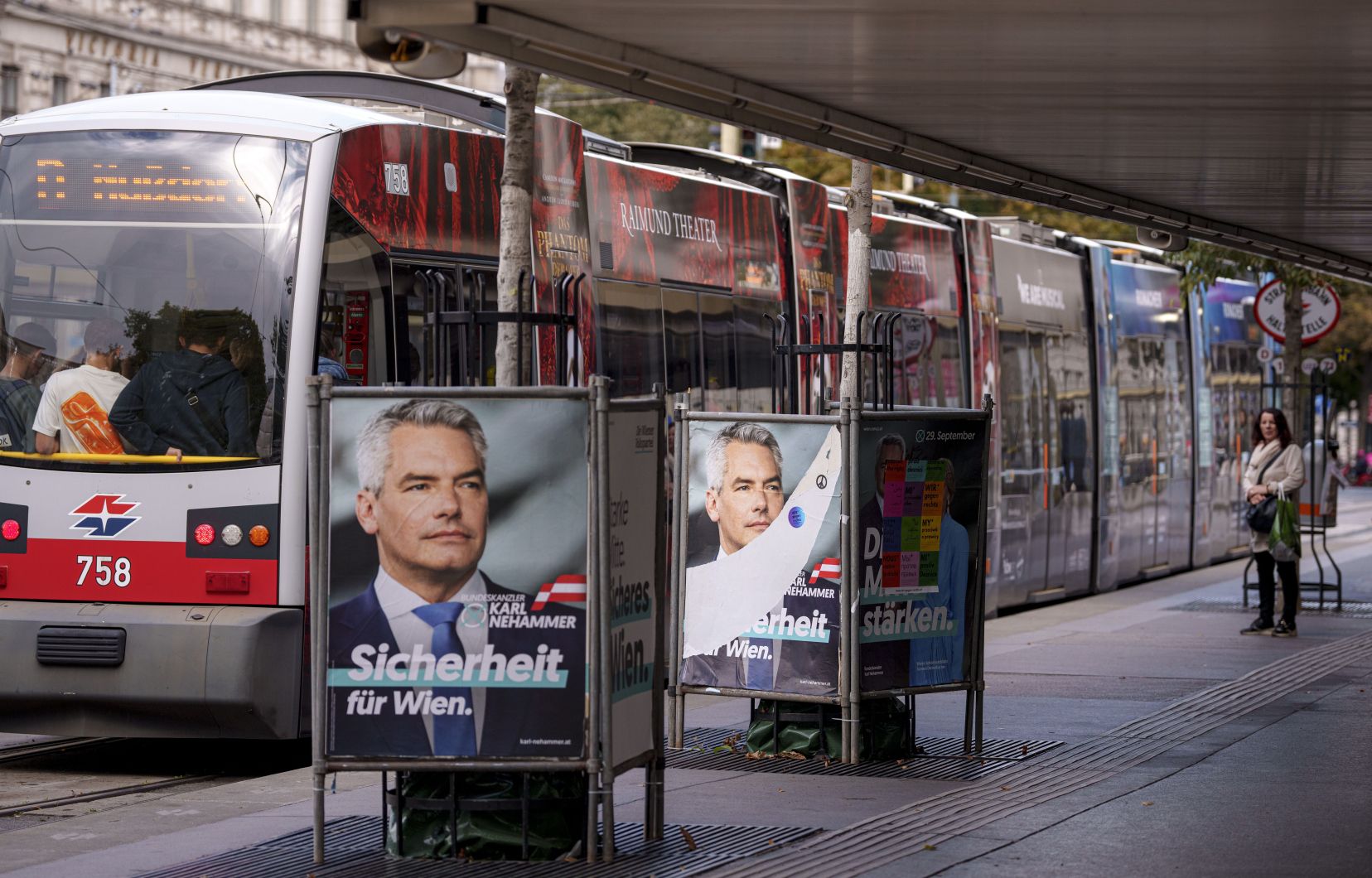After five years of an unprecedented eco-conservative tandem, the far right should come back in force in Austria to perhaps sign a historic success: more than six million voters vote on Sunday in legislative elections which promise to be close.
“This time it will be different. I don’t want to bring bad luck on us, but I feel it: this time, we are going to win,” said the leader of the Freedom Party (FPÖ), Herbert Kickl, during his final campaign meeting on Friday, organized as a symbol, in the historic heart of Vienna.
In a context of the rise of radical parties in Europe, polls give this formation founded by former Nazis at 27%, followed closely by the conservatives of the ÖVP (25%), their environmentalist partners in the coalition being credited with only 8%.
A first place for the far right would cause an earthquake in the Alpine country, according to analysts, because although it has already tasted power, it has never yet finished at the top of a national election.
But Mr. Kickl, so extreme that no party wants to govern with him, is far from assured of accessing the chancellery.
“Volkskanzler”
The majority of polling stations open at 7 a.m. (1 a.m. ET) for 6.3 million voters — out of nine million residents. The first projections, made from the results of the postal vote and the ballot boxes closed earlier, are expected shortly after the polls close at 5 p.m. (1 p.m. ET).
Crushed in 2019 by the resounding Ibizagate corruption scandal, the FPÖ rose again under the leadership of Herbert Kickl, who was hardly predestined to be in the spotlight and who thrived on the social and economic fears crossing the continent. .
Close to certain small groups criticized, the one who wants, in the native country of Adolf Hitler, to be called like him “Volkskanzler” (people’s chancellor), has adopted the term “remigration”, with the project of forfeiting their nationality and to expel Austrians of foreign origin.
This former Minister of the Interior, aged 55, also knew how to attract anti-vaxxers with his conspiratorial remarks against anti-Covid measures, the most deprived affected by inflation and all those sensitive to Austrian neutrality by condemning the sanctions against Russia.
In the crowd of his supporters, Walter Gerhard Piranty, a 54-year-old cafe owner, salutes the “ascetic” side of “this sportsman, who does not take drugs and does not drink alcohol”, others saluting his “listening”, his sensitivity to their everyday problems, “unlike other politicians”.
From green to red?
Opposite, Chancellor Karl Nehammer, leader of the conservatives, has reduced the gap in recent weeks by playing the card of a party “at the center” of the political spectrum, despite very clear positions on immigration. .
On the posters of “Türkis” (turquoise, the color of the party) and in his speeches, this 51-year-old former lieutenant, with an imposing build, calls for voting “against radicalism, for stability and not chaos”.
Despite an expected drop of more than ten points compared to the 2019 election, the ÖVP, in power since 1987, should unless there is a surprise retain the chancellery, experts predict, but the negotiations will be long to find partners.
If Mr. Nehammer repeats that he does not want to ally with Herbert Kickl, he does not reject a possible coalition with the far right, as in 2000 and 2017.
Their programs are close, particularly on the economy, but will he want to try the adventure again after the last experiment marred by a series of scandals and aborted after barely two years?
Especially since in the event of a large victory for the FPÖ, the conservatives will not agree to be the minority partner. They will undoubtedly prefer to associate themselves with the social democrats (20%) and the liberals of Neos.
With the Greens, there are many areas of contention and the divorce seems complete.
A three-way format would be a first in Austria.
